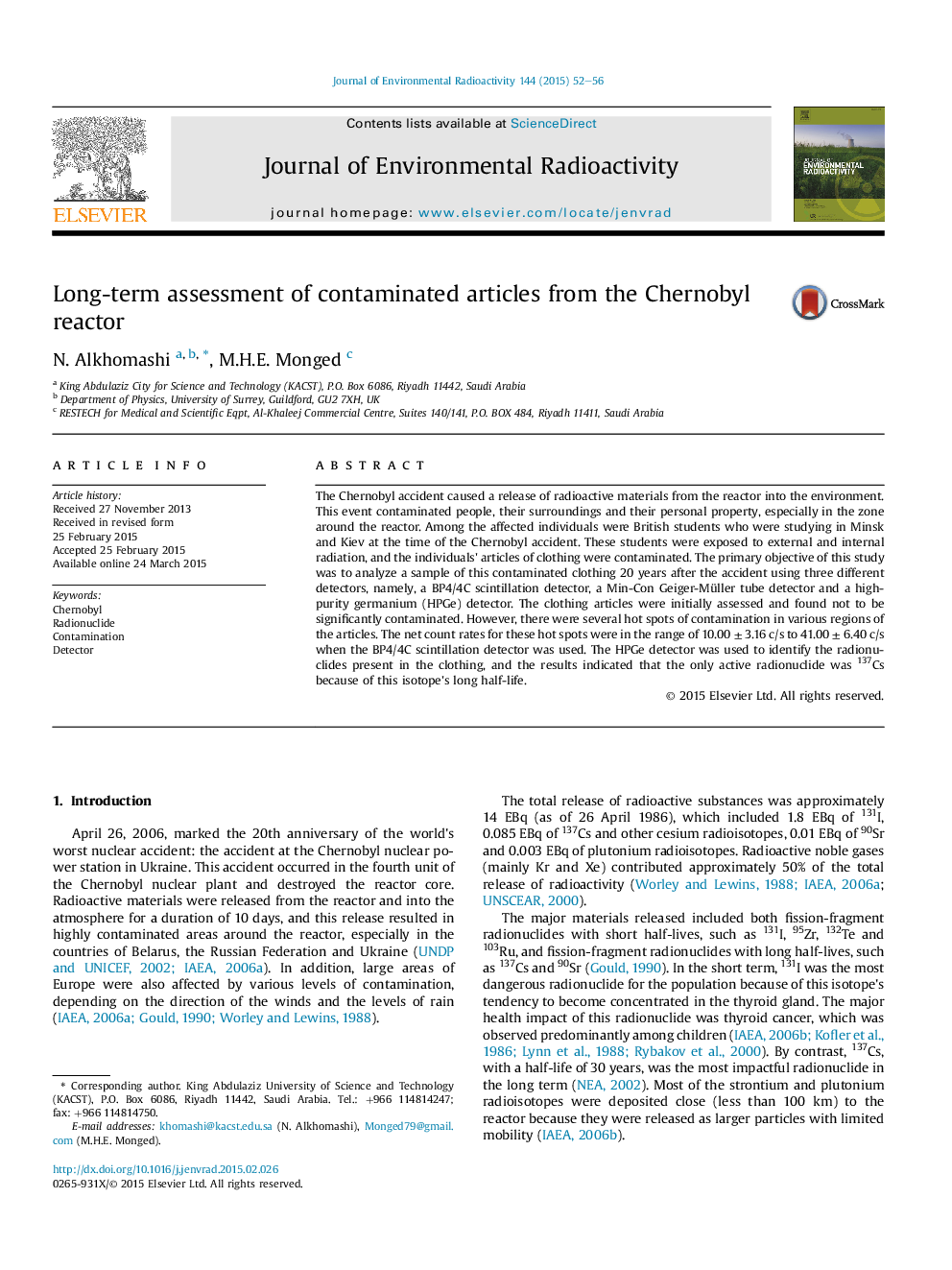| Article ID | Journal | Published Year | Pages | File Type |
|---|---|---|---|---|
| 1737913 | Journal of Environmental Radioactivity | 2015 | 5 Pages |
•The study highlights the effect of radionuclide half-life on the uncertainty of the pollution measurement.•Most of the observed radionuclides 20 years ago have now disappeared due the decay effect.•The study shows improvements in radiation detectors by detecting very low activities of isotopes not measured 20 years ago.
The Chernobyl accident caused a release of radioactive materials from the reactor into the environment. This event contaminated people, their surroundings and their personal property, especially in the zone around the reactor. Among the affected individuals were British students who were studying in Minsk and Kiev at the time of the Chernobyl accident. These students were exposed to external and internal radiation, and the individuals' articles of clothing were contaminated. The primary objective of this study was to analyze a sample of this contaminated clothing 20 years after the accident using three different detectors, namely, a BP4/4C scintillation detector, a Min-Con Geiger-Müller tube detector and a high-purity germanium (HPGe) detector. The clothing articles were initially assessed and found not to be significantly contaminated. However, there were several hot spots of contamination in various regions of the articles. The net count rates for these hot spots were in the range of 10.00 ± 3.16 c/s to 41.00 ± 6.40 c/s when the BP4/4C scintillation detector was used. The HPGe detector was used to identify the radionuclides present in the clothing, and the results indicated that the only active radionuclide was 137Cs because of this isotope's long half-life.
